There have been a lot of unexpected circumstances lately, with this trip to Zhangzhou being the most recent one.
It started with one of the administrators in my school’s Foreign Students Office asking me if I was interested in teaching English to a bunch of kids—more on that later. In any case, during the conversation, I mentioned that I was taking guqin classes on the side, at which point she invited me on a school field trip to Zhangzhou to visit a guqin workshop.
And with that, I went to Zhangzhou.
The ride there was about three hours, and we ended up on the border of Fujian and Guangdong, and if we had kept going, our next freeway exit would have been Shantou. Alas, I’ll have to make another trip down in the near future.
The building itself was impressive. Built just three years ago, this entire complex was intended to be a tourist attraction, although we were the only guests there during the two days we visited.
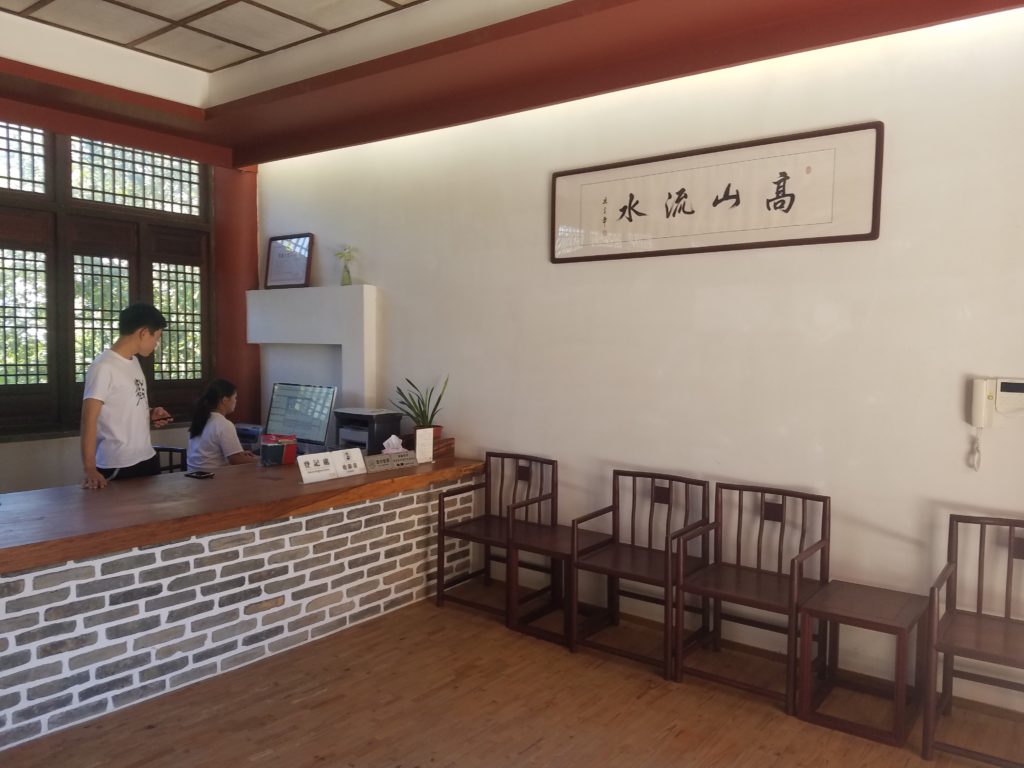
Here’s the dormitory lobby, 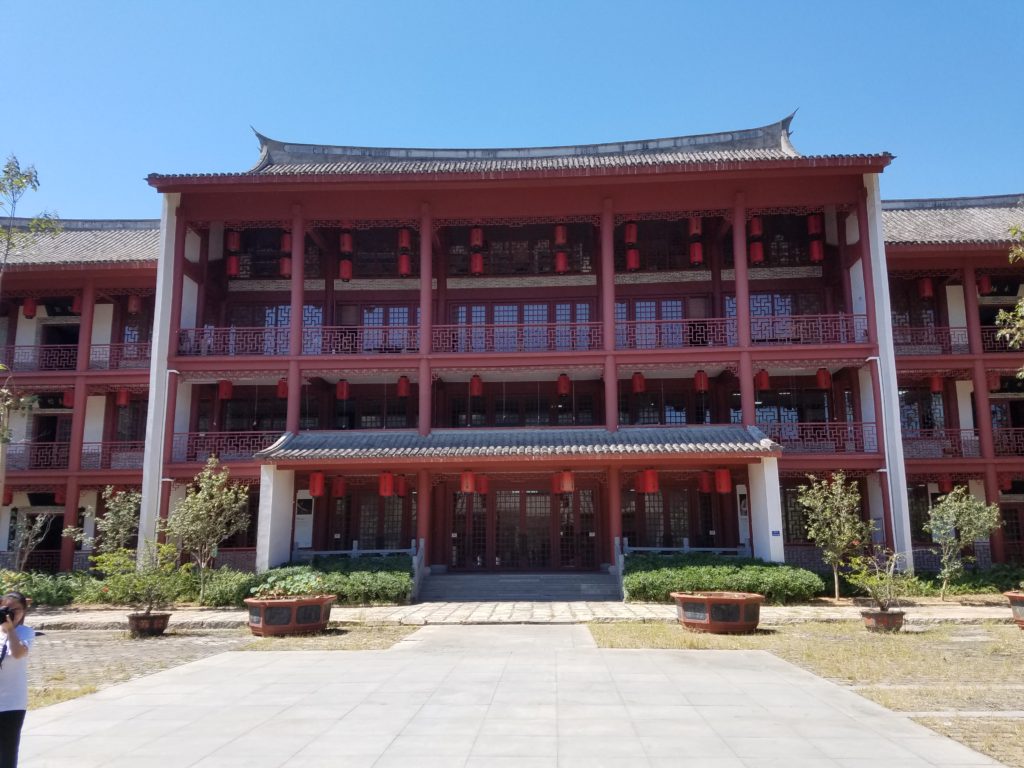
and here’s the workshop!
Prior to coming, I had mentioned the trip to my guqin instructor, who commented that it was too commercialized and touristy for his liking, but at the same time, it’s nice that guqin is getting more exposure.
Indeed, this place was tourist-oriented. Our dorms here were much nicer than the dorms at school. Each room was equipped with a heated toilet seat, a shower with decent water pressure, as well as a beautiful guqin and tea set.

The scholarly corner. 
The entire complex was stocked with white peony tea.
Our itinerary started with a tour of the facilities and exhibition halls, where we learned a bit about the qin-making process and got to see some examples of exquisite guqin.
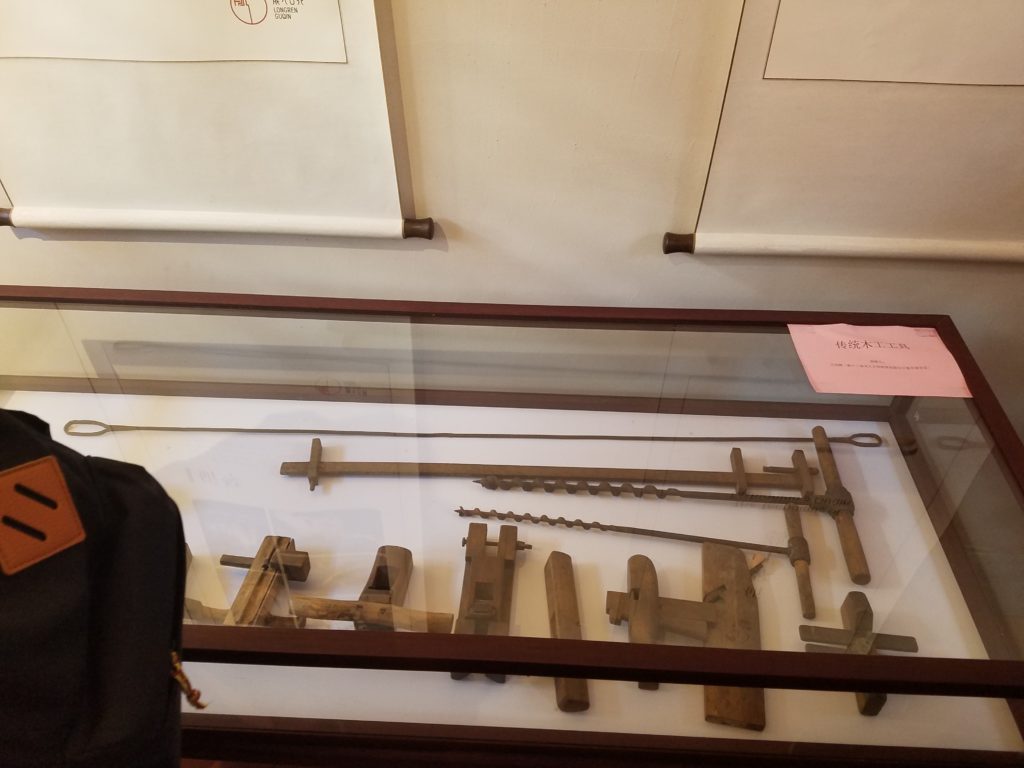
Qin-making tools 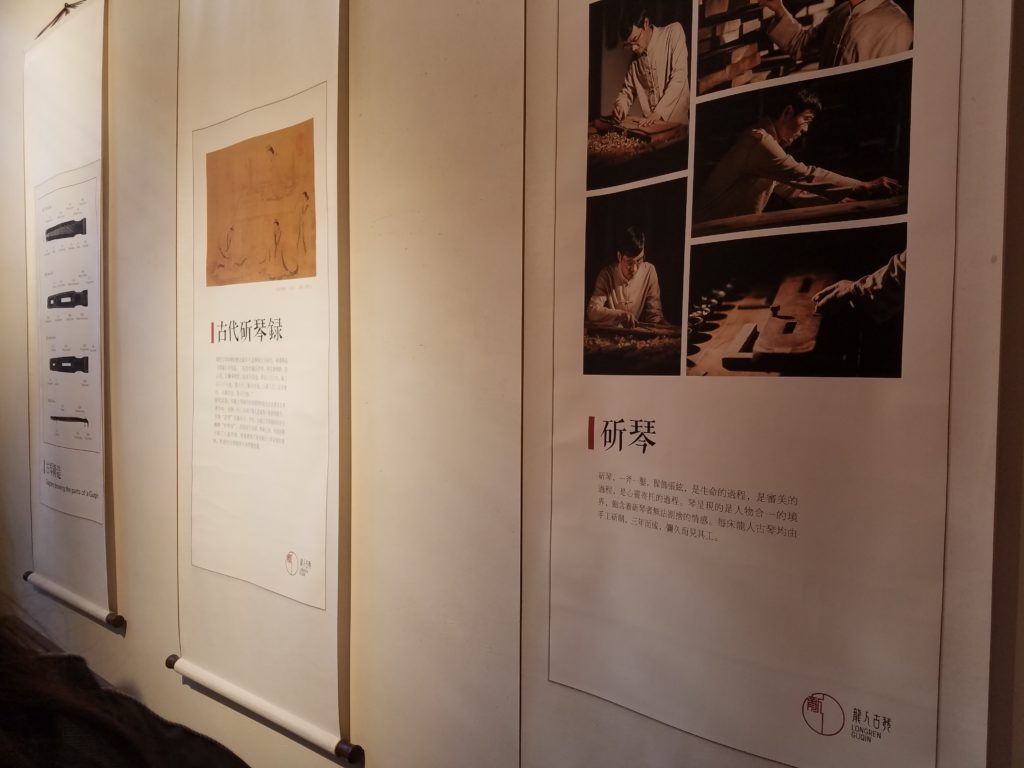
I thought this was clever for didactic panels.
The guqin here were much more expensive than my 1,800 rmb (~$250?) qin. The absolute cheapest I could find was 9,000, and they soared into many, many figures higher. The guqin on exhibition are considered fine examples of qin that the company is keeping in their private collection. These are often decorated, either with beautiful engravings on the back, or with elaborate butterfly illustrations that are reminiscent of maki-e.

After an afternoon of guqin workshops teaching right-hand techniques, we got dinner and then had the evening to ourselves.
I had heard from one of the staff members that there was a tea house on-site. Having not had tea with friends since leaving the US, I was eager to foster some communi-tea with my new classmates.
“Does anybody wanna get tea tonight?” I asked in the groupchat.
“What time?” a classmate we call Bro Zhang (張哥) replied.
“Meet me in the lobby at 7. We can go together.”
At 7, Bro Zhang came over and I was about to head to the tea house with him when suddenly I heard a voice behind us.
“Yo, wait up!”
I turned around to see a band of nearly 30 students coming towards us. Almost our entire class had came for tea. Delighted, I led them to the tea house and got two long tables for us. Fortunately, a few of the other classmates were comfortable serving tea, so I served one table while someone else served the other.
Our evening consisted of incense, snacks, tea, and board games. While my table was rather traditional and played weiqi (I won!), the other table played Uno. Only two of us knew how to play weiqi though, so our other classmates used the board to play five-in-a-row.
This all reminded me Saturdays at Pomona, with casual social activities being facilitated through snacks, tea, and board games. It was through these chats that we were able to meet each other, since none of us really talked to each other during class.
While the tea house closed at 8, my evening was not about to end so early. Far in the distance, I heard the familiar sound of Chinese opera and decided to check it out. Along the way, I ran into two classmates.
“Where are you going?” they inquired.
“To the theater!” I replied.
“Oh my gosh, there’s a theater here?”
And with that, the three of us went to the local theater.
The theater was situated across from the local Daoist temple. There was some sort of festival going on, and the ground was red with fresh firecrackers. My classmates were a bit disappointed at first.
“I thought you meant a movie theater,” one of them muttered.
“Nope, but this should be interesting anyways!” I replied cheerfully.
It was.
As we walked past the deafening speakers, my classmate exclaimed, “YO! This is Hokkien!!!”
“You speak Hokkien?” I was surprised.
“Yeah, all of my neighbors spoke Hokkien back in the Philippines,” she explained.
And with that, we watched for a few minutes before deciding that the deafening speakers were really a bit too much.
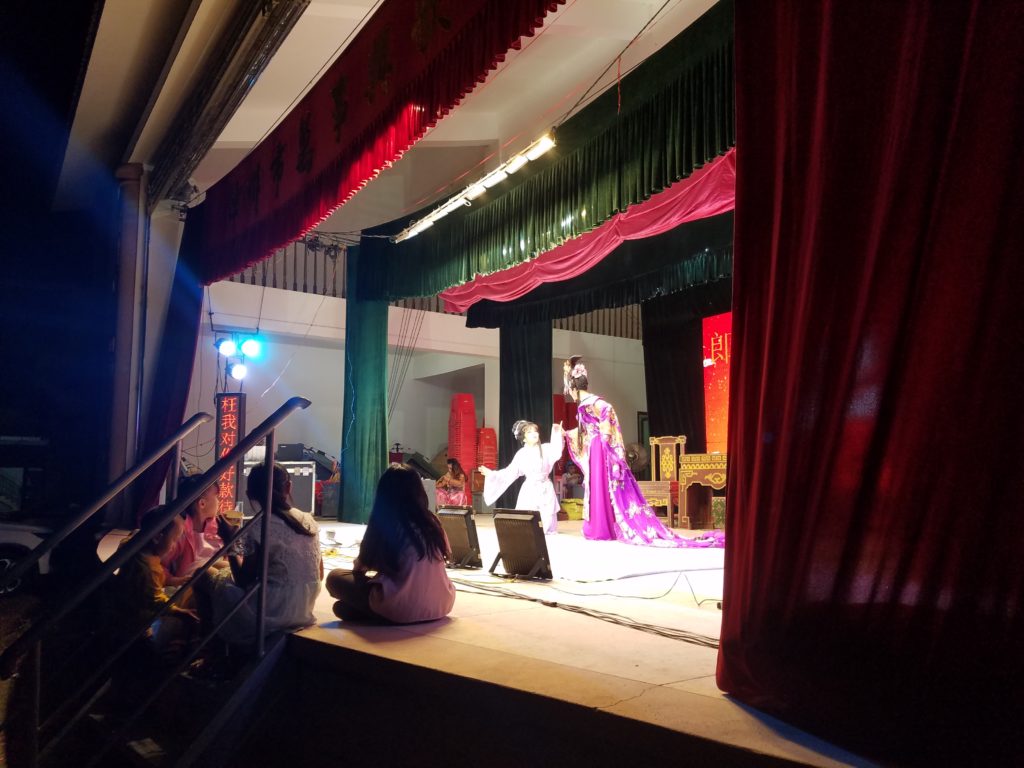
Most of the audience was elderly, but these kids were really into it too!
The temple was quite small, and I got a few stares for taking photos of it, but ah—oh well. I was surprised that there was a lack of incense. I felt like I smelled more cigarette smoke as I walked through the shrine than the familiar scent of sandalwood.
We walked back to the dorms to call it a night. The next day would be pretty much the same; an introductory guqin workshop, tour of the grounds, and then our return home (which ended up taking 5 hours due to traffic).
I did get to learn how to string a guqin though. It’s quite tiresome, as it takes a lot of strength to tighten the string and keep it taut while wrapping it around the guqin legs.

Overall, the trip was amazingly fun and a great bonding experience. Our rooms were beautiful, and although I’m a bit disappointed that I didn’t learn anything new in terms of guqin-playing, I am glad that I got to visit.

Selfie with Bro Zhang 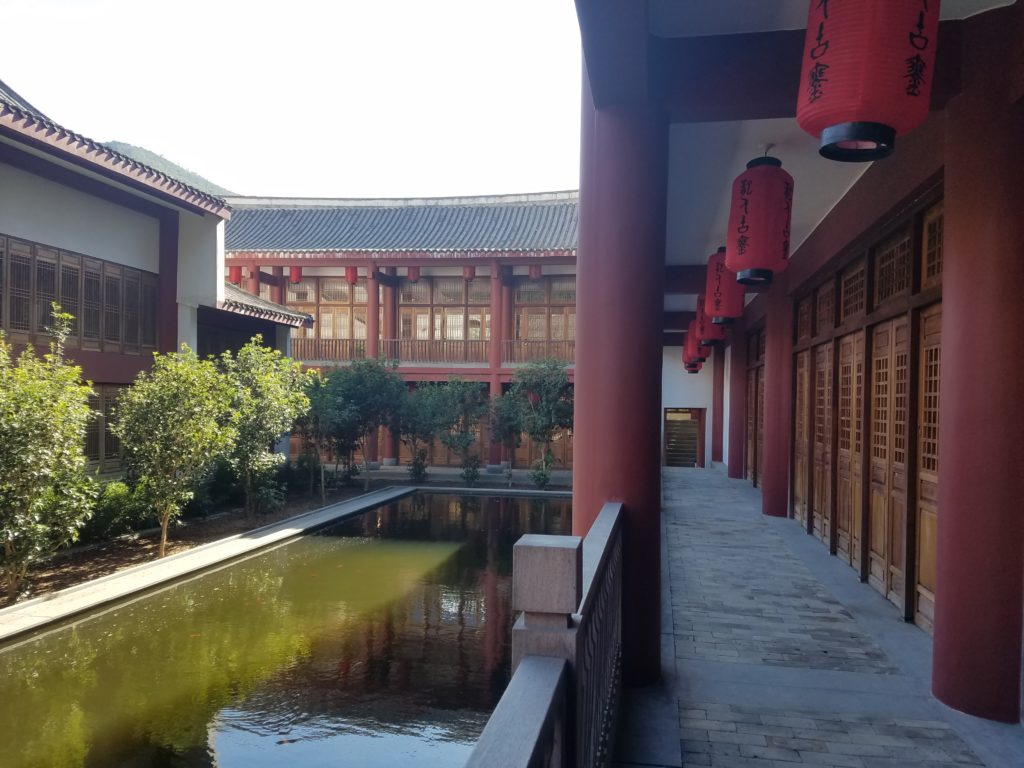
Our picturesque dorms and classrooms 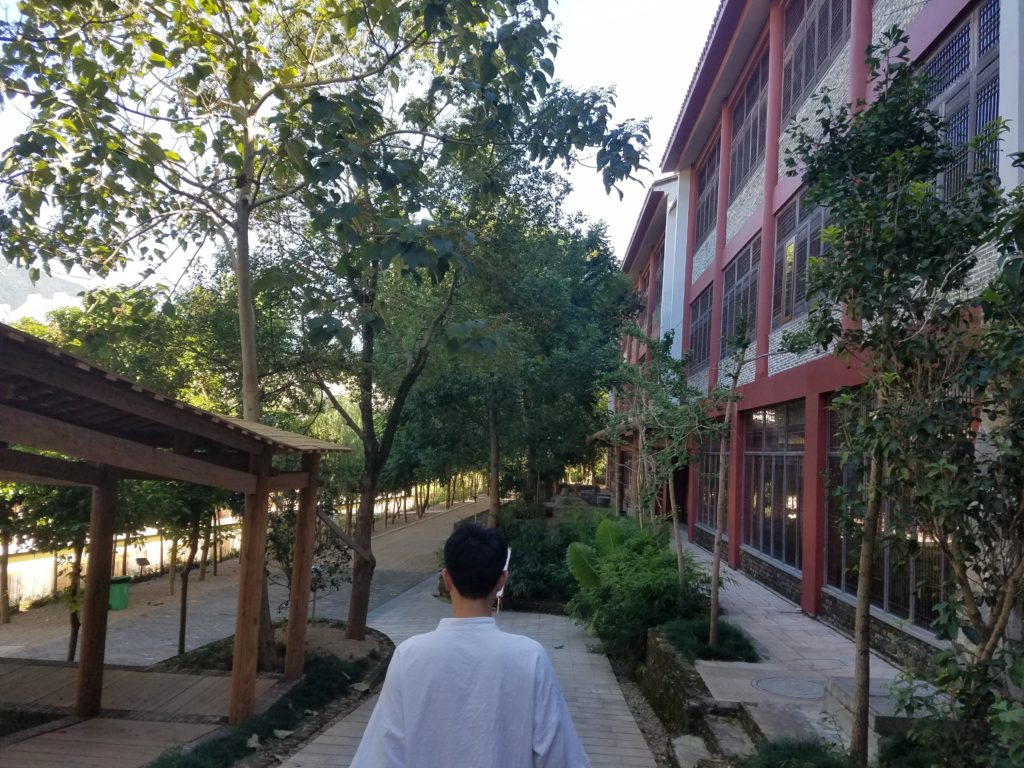
Our host, Beisheng
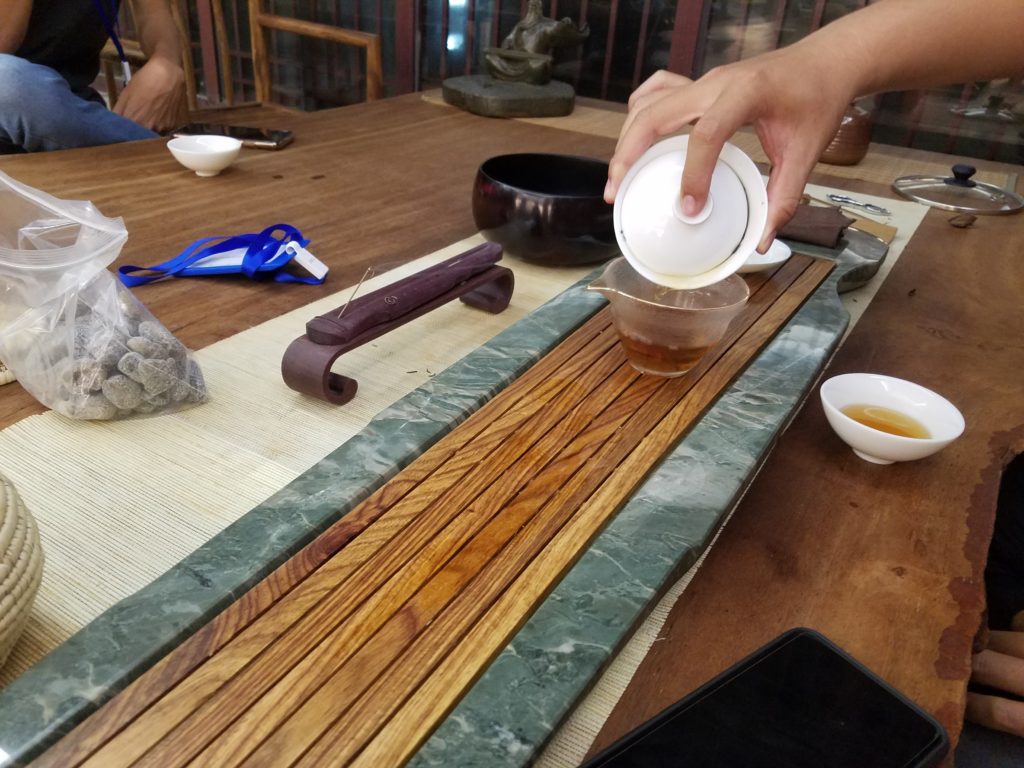


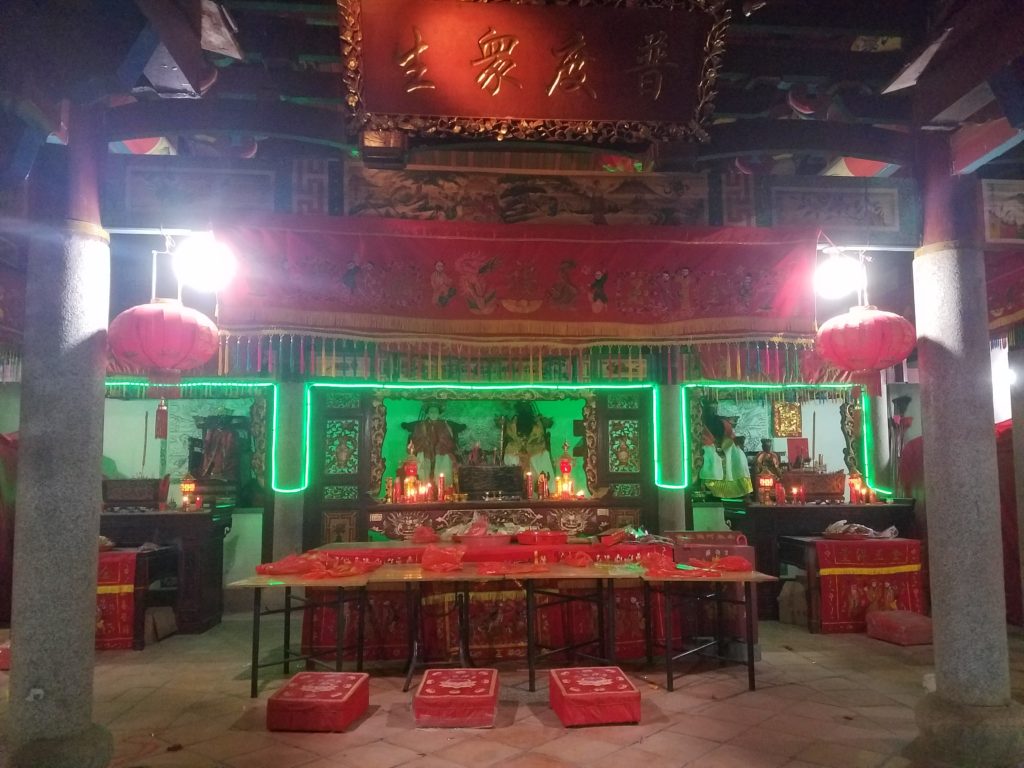
😊✌…sound like a nice trip and have made a group friend there.